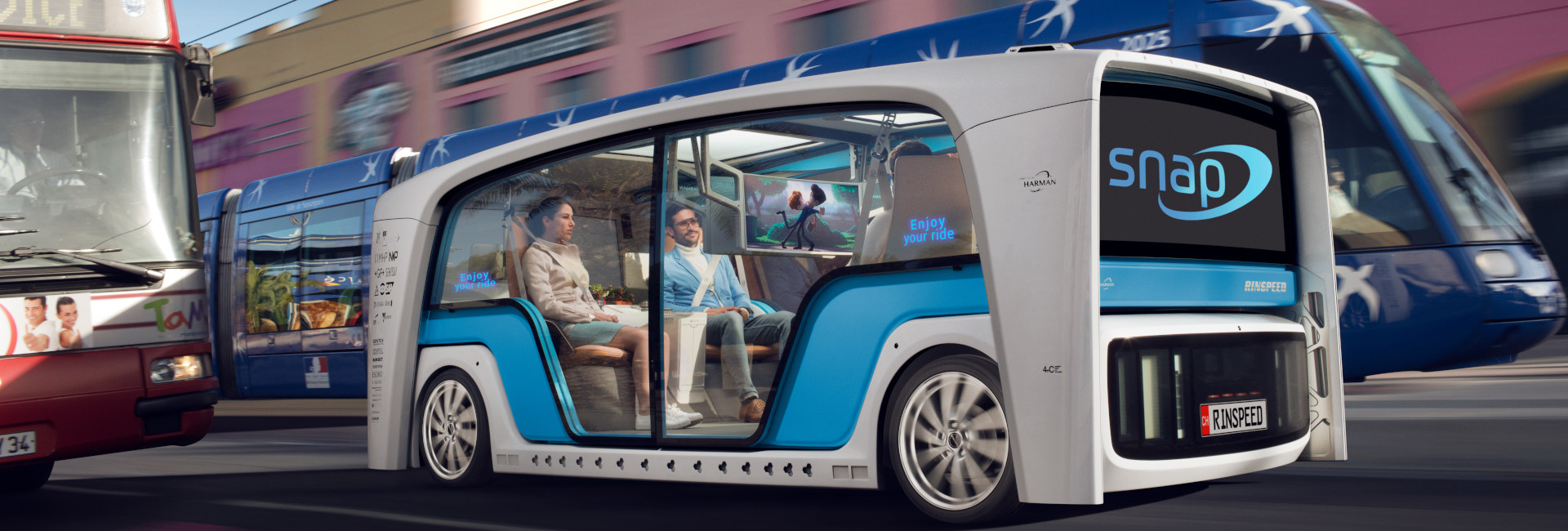Pooling and its behavioral foundations
Recent studies have shown that the introduction of autonomous vehicles (AVs) could increase the demand for car travel in an unregulated environment. Ride pooling is seen as a potential solution to lessen the undesirable impact of AV. Since neither the acceptance nor the operation of ridepooling with AVs are sufficiently well understood, this research aims at identifying the behavioural factors that influence travel behaviour with ridepooling.
Autonomous vehicles (AVs) are expected to make traffic flow more efficiently, especially on motorways. However, recent simulation results for the Zurich region reveal that the unregulated use of AVs would lead to an increase of road traffic, both due to induced demand and empty runs of AVs. As a result, congestion levels and energy consumption would substantially increase.
A potentially effective way to reduce traffic while increasing mobility would be to use AVs for pool trips. Ride pooling (RP), combined with AV technology, has the potential to combine the advantages of public transport (higher vehicle occupancy) and private vehicles (direct trips). This would result in substantial accessibility gains, especially in areas and at off-peak times of the day where conventional public transport services cannot be efficiently operated.
Previous simulation studies did not account for the potential of ridepooling. Furthermore, little is known about travel behaviour with ride pooling options in general and particularly for the Swiss context.
The main goal of our part in the research project is to explain travel behaviour in a world with shared AVs. To this end we investigate the willingness-to-share (i.e. ride pool) for Switzerland and put it into context with other behavioural variables such as travel time and waiting time, travel time variability, the type of pick-up/drop off point, and the distance to it. In collaboration with colleagues from ETH we aim to examine various demand management strategies such as pricing and incentives to pool trips and various vehicle operation strategies using agent-based simulation studies. The focus will be on the impact of these strategies on customer demand and traffic flow, especially during peak-hours.
In a first phase, our colleagues from the FHNW Institute for Applied Psychology conduct qualitative interviews to learn more about the motivations to use AVs and about the perception of this new technology. In a second phase, we describe and quantify travel behaviour with AVs, by conducting stated choice experiments which will include variables specific for ride pooling like the distance to pick-up/drop off points, travel and waiting time reliability or the number of other passengers in the vehicle. The data will be collected via an online survey. To inform the respondents about the functioning of AVs and ridepooling, we use videos and aim to describe the related travel behaviour in more detail than previous research in other countries.
In the third phase, our colleagues from ETH use the agent-based simulation tool MATSim to model individual trips and vehicle movements of the ride-hailing operators’ vehicles. To do so, they simulate the operator using fast matching algorithms that react on the consumer demand and given the current position of all vehicles of their fleet. In addition, the impact of various pricing and operating strategies will be tested. This will allow us to gauge the effect of various policy scenarios on total demand and demand at various times of the day, as well as the load of vehicles on various roads at certain times of the day.
- FHNW, Fachbereich für Verkehr und Mobilität, Institut für Bauingenieurwesen
- FHNW, Institut für Markangebote und Konsumentscheidungen
- ETH Zürich, Institut für Verkehrsplanung und Transportsysteme
- Kagho, G. O., Balac, M., van Eggermond, M. A. B., & Erath, A. (2024). Simulation of policies for automated ride-hailing and ride-pooling services. Arbeitsberichte Verkehrs- Und Raumplanung, 1891. https://doi.org/10.3929/ethz-b-000689097Kagho, G. O., Balac, M., van Eggermond, M. A. B., & Erath, A. (2024). Simulation of policies for automated ride-hailing and ride-pooling services. Arbeitsberichte Verkehrs- Und Raumplanung, 1891. https://doi.org/10.3929/ethz-b-000689097
- van Eggermond, M., Erath, A., & Tanner, R. (2024, September 18). How popular will ride hailing and ride pooling be with autonomous vehicles? European Transport Conference. https://doi.org/10.26041/fhnw-10388
- Erath, A. (2023). How autonomous electric vehicles will affect the Swiss transport system. What we already know and what we can’t know yet. In K. W. Axhausen & E. Z. Netzwerk Stadt und Landschaft (Eds.), NSL Kolloquium - Transport planning. Where do we go now? ETH Zürich. https://doi.org/10.26041/fhnw-5954
- Stefanelli, A., Haiderer, N., Studer, N., Schaffner, D., Erath, A., & van Eggermond, M. (2022). Pool More, Drive Less: An In-Depth Qualitative Investigation of Barriers and Motivators of Ride-Pooling in Autonomous Vehicles. The Association for Consumer Research Conference. https://doi.org/10.26041/fhnw-4397
